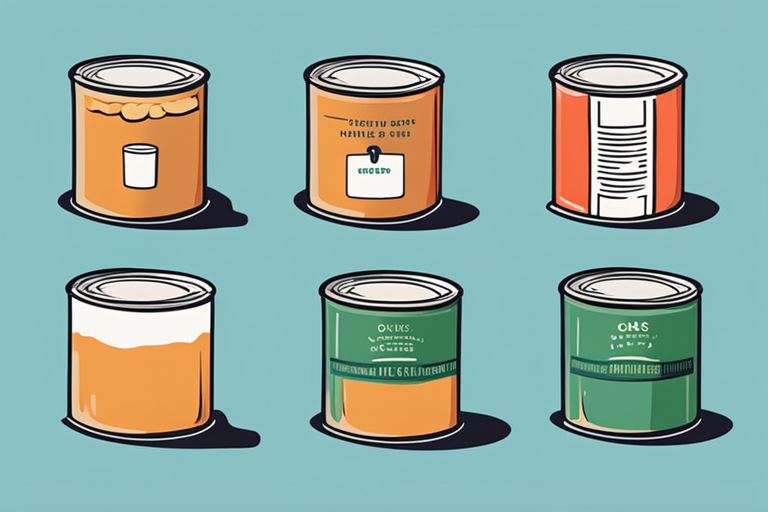
The Ultimate Guide to Hosting a Successful Canned Food Drive
The Ultimate Guide to Hosting a Successful Canned Food Drive
In today's society, many people struggle with food insecurity, making food drives an essential way to support those in need. Canned food drives are particularly popular due to the non-perishable nature of canned goods, making them easy to store and distribute. If you're considering hosting a canned food drive in your community, this comprehensive guide will provide you with all the information you need to make it a success.
Why Host a Canned Food Drive?
Canned food drives play a crucial role in combating hunger and supporting vulnerable populations. Here are some reasons why hosting a canned food drive can make a significant impact:
1. Addressing Food Insecurity
- Canned food drives provide essential nutrition to individuals and families facing food insecurity.
- They ensure that non-perishable food items are readily available for those in need.
2. Building Community Support
- Food drives bring people together for a common cause, fostering a sense of community spirit.
- They offer an opportunity for individuals and organizations to contribute to a meaningful cause.
3. Raising Awareness
- Canned food drives raise awareness about hunger issues in the local community.
- They educate the public about the importance of supporting those in need.
Planning Your Canned Food Drive
Hosting a successful canned food drive requires careful planning and organization. Follow these steps to ensure your food drive runs smoothly:
1. Set Goals
- Determine the amount of food you aim to collect during the drive.
- Set specific targets to keep your team motivated throughout the campaign.
2. Choose a Collection Site
- Select a convenient location with high foot traffic for collecting donations.
- Consider partnering with local businesses, schools, or community centers to host collection bins.
3. Create a Marketing Plan
- Promote your canned food drive through social media, local newspapers, and community bulletin boards.
- Design eye-catching flyers and posters to attract donors and raise awareness.
4. Recruit Volunteers
- Assemble a team of dedicated volunteers to help with donation collection, sorting, and distribution.
- Provide clear instructions and training to ensure smooth operation during the food drive.
5. Ensure Food Safety
- Prioritize the safety and quality of donated food items.
- Avoid accepting damaged, expired, or dented cans, as they may pose health risks.
Food Safety Tips for Canned Food Drives
Ensuring the safety of donated canned goods is essential to protect the health of recipients. Follow these food safety tips when collecting and handling canned food donations:
1. Check Expiration Dates
- Inspect each can for expiration dates before accepting donations.
- Discard any expired or damaged cans to prevent foodborne illnesses.
2. Handle with Care
- Store donated cans in a clean, dry, and well-ventilated area to maintain their quality.
- Avoid exposing cans to extreme temperatures or direct sunlight, as it can affect food safety.
3. Avoid Cross-Contamination
- Keep different types of canned goods separated to prevent cross-contamination.
- Use separate bins or boxes for storing various food items during the collection process.
4. Maintain Hygiene Standards
- Encourage volunteers to wash their hands regularly and wear gloves when handling food donations.
- Clean and sanitize collection bins and sorting areas to prevent the spread of germs.
Conclusion
Hosting a canned food drive is a powerful way to support your community and make a difference in the lives of those in need. By following the steps outlined in this guide and prioritizing food safety, you can ensure a successful and impactful food drive that benefits individuals and families facing food insecurity. Get started today and experience the rewarding feeling of giving back through a canned food drive!

Authoritative Food Safety References
These agencies and university labs inform every tip and health precaution we publish.
USDA FoodKeeper – Cold Storage Guidelines
Official refrigerator, freezer, and pantry timelines maintained by the U.S. Department of Agriculture.
Visit USDA FoodKeeperFDA Produce Safety Rule & Grower Guidance
Field-to-fridge handling practices that prevent contamination of fruits, vegetables, and leafy greens.
Visit FDA Produce SafetyCDC Foodborne Illness Prevention Hub
Surveillance-backed guidance on pathogens, symptoms, and steps to reduce foodborne illness risk.
Visit CDC Food SafetyUC Davis Postharvest Technology Center
University research detailing optimal storage atmospheres for produce after harvest.
Visit UC Davis PostharvestPenn State Extension – Home Food Preservation & Safety
Peer-reviewed extension bulletins on safe canning, chilling, and reheating practices.
Visit Penn State ExtensionWhat are the best non-perishable food items to donate?
How can I ensure food safety during a canned food drive?
Can I donate homemade or home-canned items to a food drive?
How can I involve my community in a canned food drive?
Scan your food directly and get instant safety info using our AI-powered camera feature.